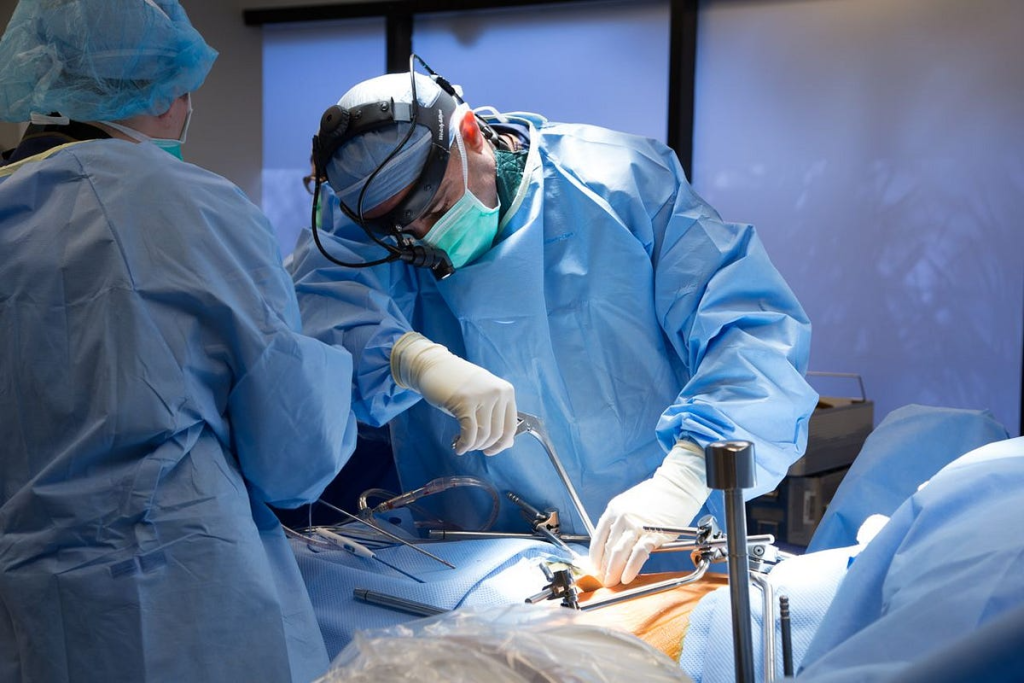Surgeries vary a lot in how hard they are and how risky they are. Neurosurgery is known as one of the toughest fields. It needs a lot of skill and precision. For example, what is the most painful shoulder surgery surgeries like removing brain tumours or fixing cerebral aneurysms can take 8-12 hours or more. They come with big risks.

Other hard surgeries include spinal fusion, organ transplants, and open-heart procedures. These are among the hardest to get better from. They are not just hard but also risky. Risks include infections, blood clots, and lasting disabilities.
What makes a surgery hard involves two main parts: the technical challenges for surgeons and the pain for patients. Each surgery is different in complexity and pain levels. It’s important to look at both sides.
For surgeons, several factors make a surgery difficult:
These factors greatly affect the surgeon’s success in the surgery.
For patients, the pain from surgery is a big worry. Surgeries like spinal fusion and total joint replacement are very painful. They are complex and disrupt a lot of tissue.
The recovery from these surgeries is long and hard. Pain management is key in the recovery. A study on the National Institutes of Health website shows that good pain management is vital for better patient results.

Understanding both the technical challenges for surgeons and the pain for patients helps us see how complex surgical difficulty is.
Neurosurgery is known for its technical challenges and high risks. It stands out in medical complexity. Neurosurgery includes many complex procedures, each with its own challenges and risks.
Brain tumour resections are very delicate. Precision is key as surgeons carefully remove tumours. They must avoid harming the brain’s important functions.
The intricacy of brain anatomy requires a lot of skill and experience. These surgeries are long and need careful planning.
Advanced imaging and monitoring tools help with the precision needed. They are essential for these operations.
Cerebral aneurysm repairs are also very complex. The risks are high because of the chance of rupture. Surgeons must be skilled in microsurgery and make quick decisions.

These repairs require precise clipping or coiling to avoid rebleeding. This demands technical skill and a deep understanding of the patient’s anatomy.
Even with new techniques, these surgeries are risky. Mortality rates and recovery challenges are big concerns. Postoperative care is key to managing these risks and improving outcomes.
Recovering from neurosurgery is long and hard. It needs a lot of care and rehabilitation. A team approach is vital to support patients during their recovery.
Shoulder surgeries, like rotator cuff repairs and total shoulder replacements, are very painful and complex. We’ll look at the most painful shoulder surgeries. We’ll rank them based on their complexity and pain levels. We’ll also talk about what patients go through during recovery.
Rotator cuff repairs are common and have a tough recovery. The repair attaches the tendon to the bone, causing a lot of pain after surgery. Patients often feel pain and can’t move much for weeks.
We use advanced pain management to help patients get through this hard time. It’s key for a smooth recovery and to avoid problems.
Total shoulder replacement replaces the damaged joint with artificial parts. This surgery helps those with severe arthritis or joint damage. But the first few weeks are very painful.
Revision surgeries are more complex and painful than the first one. They fix problems from previous surgeries, making recovery even harder.
Managing pain is key for shoulder surgery patients. We use medicines, physical therapy, and things like acupuncture. We create a pain plan for each patient for the best recovery.
Knowing about the most painful shoulder surgeries helps us manage pain better. We aim to give full care for surgery and recovery. We want our patients to be happy and healthy.
Some surgeries are more painful than others. This is because of where they are done and how complex they are. Knowing which surgeries are the most painful can help both patients and doctors prepare for recovery.
Spinal fusion surgeries join two or more vertebrae together. They are very painful because they damage a lot of tissue and affect a critical area. The recovery is long and hard, often needing a lot of physical therapy.
Pain management is key. Doctors use medicine and other treatments to help patients deal with the pain.
Surgeries on the foot and ankle, such as for severe fractures or deformities, are very painful. This is because these parts bear a lot of weight. The most painful foot surgery can differ, but surgeries that realign or fuse bones are usually harder to recover from.
Patients need careful care after surgery. This includes managing pain and rehab to get back mobility and strength.
Thoracic and cardiac surgeries are complex and can be very painful. Recovering from these surgeries is hard because they involve critical organs.
Surgeries like thoracotomy or cardiac bypass need a lot of care afterward. Pain management is important to keep patients comfortable and help them recover.
When looking at the top 3 riskiest surgeries or the top 3 most painful surgeries, spinal fusion, some foot and ankle reconstructions, and thoracic or cardiac surgeries are often on the list. These surgeries are complex and need a lot of care and pain management afterward.
Some surgeries stand out because they last a long time and are very risky. what is the most painful shoulder surgery. These operations need a lot of skill and care. They are hard for both the doctors and the patients.
Operations lasting more than 8 hours are called marathon surgeries. They require a lot of skill and stamina from the team. Complex neurosurgical and cardiac procedures often take this long.
For example, removing brain tumours or fixing complex heart problems can take up to 12 hours. These long surgeries increase the chance of problems. So, careful planning and execution are key.
Heart surgeries, like heart transplants or complex coronary artery bypass grafting (CABG), are very risky. They are long and can be deadly.
Studies show that death rates for these surgeries can be between 5% and 20%. This depends on the patient’s health, the surgeon’s experience, and how complex the surgery is.
Even though these surgeries are dangerous, they can save lives. The skill of the team, modern technology, and good care after surgery help reduce risks. This improves how well patients do.
It’s key for patients and doctors to understand the risks and challenges of surgeries. We’ve looked at the technical hurdles and pain levels of various surgeries. This includes neurosurgery, orthopedic surgeries, and other complex operations.
Some surgeries, like brain tumour removals and cerebral aneurysm repairs, are very risky. Other surgeries, like rotator cuff repairs and spinal fusion, can be very painful for patients.
When thinking about the most painful surgery, it’s important to weigh the risks and recovery times. Knowing the challenges and possible complications helps patients prepare for recovery. It also helps doctors create better treatment plans.
To get the best results, careful planning is needed. Recognizing the complexity of surgeries and the risk of pain and complications is important. This way, we can improve patient care and recovery experiences.
Total shoulder replacement is often seen as the most painful. It involves replacing the entire shoulder joint with artificial parts. This leads to a lot of pain after surgery and a long recovery.
Surgeries are hard for surgeons because of their complexity. They need a lot of precision and can have risks and complications.
Neurosurgeries like brain tumour removals and cerebral aneurysm repairs are very risky. So are high-risk cardiac surgeries. These are complex and can have serious complications.
Surgery can hurt, but the pain varies. It depends on the surgery type, your pain tolerance, and how well pain is managed.
The longest surgery is called a “marathon operation.” It can last over 8 hours. It’s usually for complex surgeries like neurosurgeries or high-risk cardiac surgeries.
Spinal fusion surgery is very painful. It fuses vertebrae. This causes a lot of pain after surgery and a long recovery.
Some very painful surgeries include total shoulder replacement, spinal fusion, and foot and ankle surgeries. Thoracic and cardiac procedures are also very painful due to their complexity.
High-risk cardiac surgeries and neurosurgeries like brain tumour removals are very dangerous. They are complex and can have serious complications.
Subscribe to our e-newsletter to stay informed about the latest innovations in the world of health and exclusive offers!
WhatsApp us